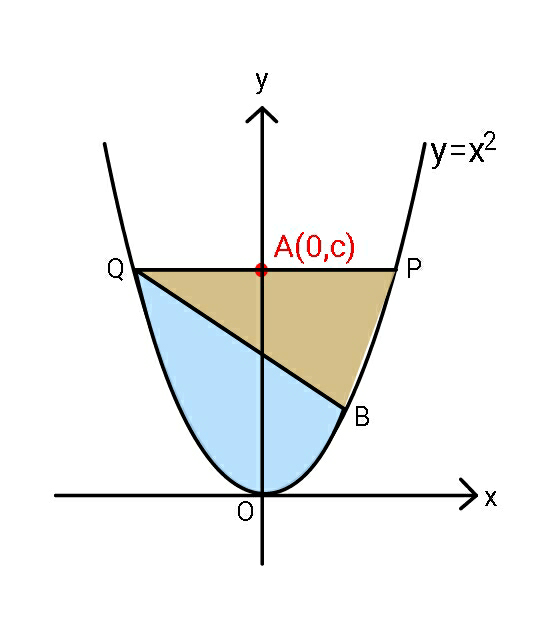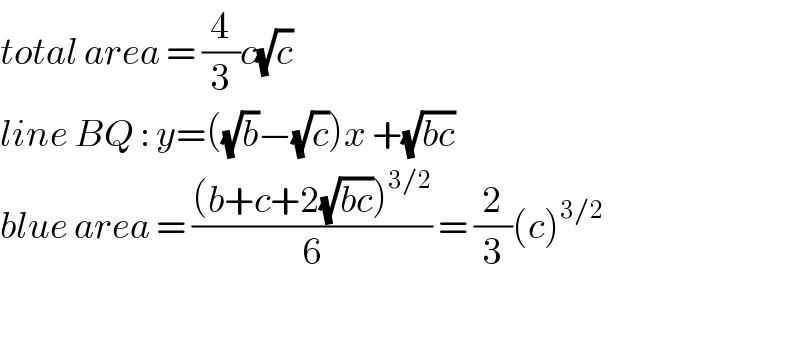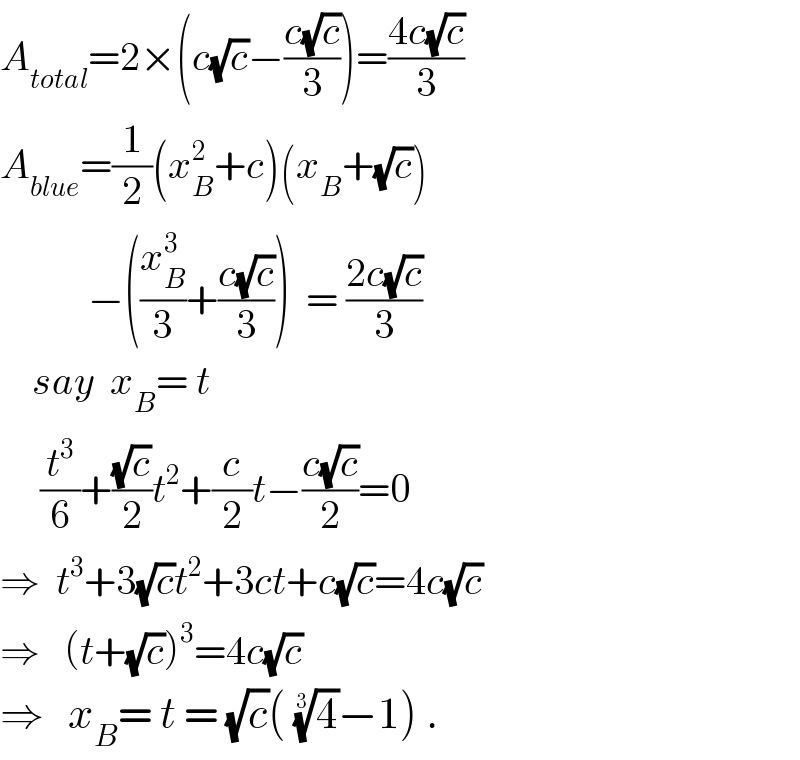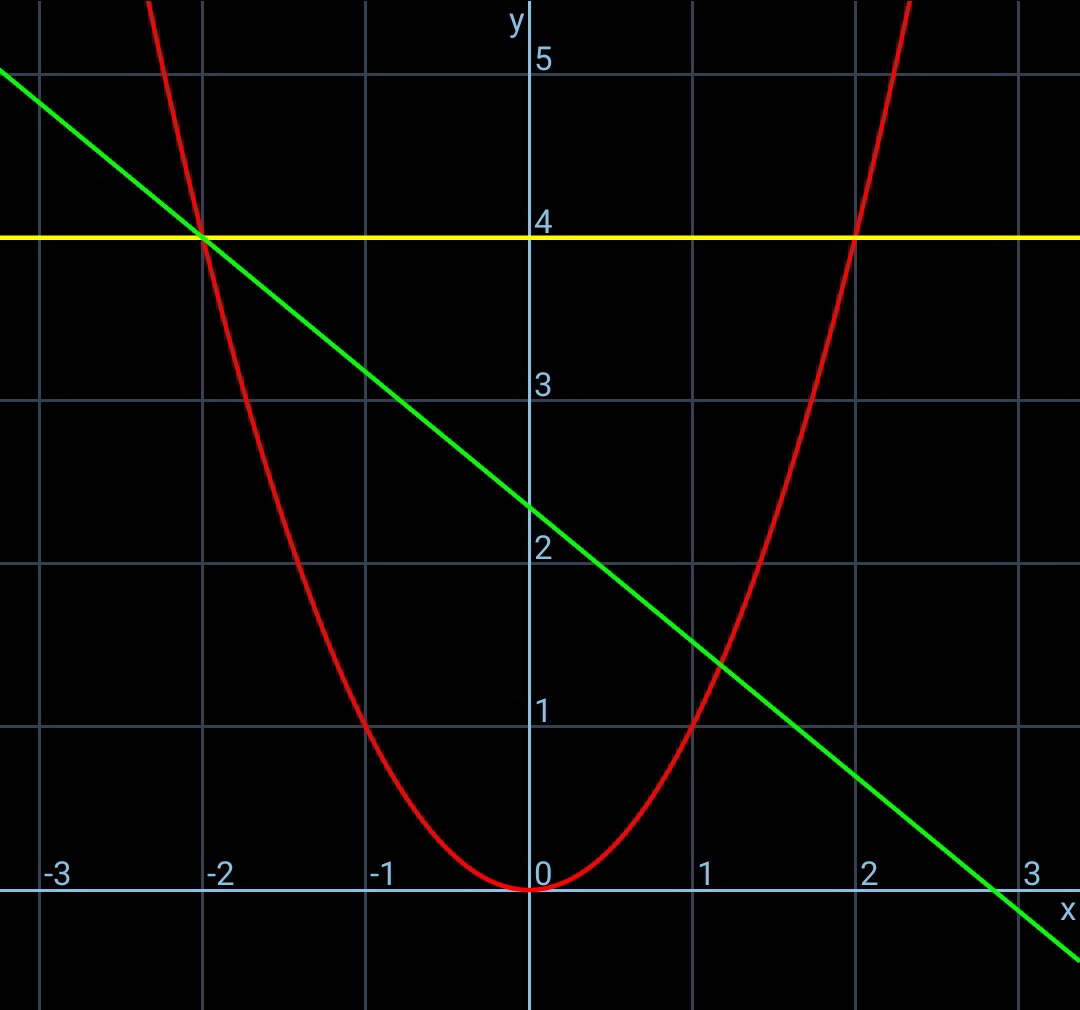
Question and Answers Forum
Question Number 88820 by ajfour last updated on 13/Apr/20

Commented by ajfour last updated on 13/Apr/20

Commented by john santu last updated on 13/Apr/20

Commented by jagoll last updated on 13/Apr/20
![((√b)+(√c))^3 = 4((√c))^3 (√b) + (√( c)) = (4)^(1/(3 )) (√c) (√b) = (√c) [ (4)^(1/(3 )) −1 ] (√(b/c)) = (4)^(1/(3 )) −1](Q88844.png)
Commented by jagoll last updated on 13/Apr/20

Commented by john santu last updated on 13/Apr/20

Answered by ajfour last updated on 13/Apr/20

Answered by mr W last updated on 13/Apr/20
![(2/3)(x_B +(√c))[((c+x_B ^2 )/2)−(((x_B −(√c))/2))^2 ]=(1/2)×(2/3)×2c(√c) let C=(√c) (x_B +C)[((C^2 +x_B ^2 +2Cx_B )/4)]=C^3 ((x_B /C))^3 +3((x_B /C))^2 +3((x_B /C))−3=0 ((x_B /C)+1)^3 =4 (x_B /C)=(4)^(1/3) −1≈0.5874 ⇒x_B ≈0.5874 (√c)](Q88839.png)
Commented by ajfour last updated on 13/Apr/20

Commented by mr W last updated on 13/Apr/20

Commented by mr W last updated on 13/Apr/20

Commented by ajfour last updated on 13/Apr/20

